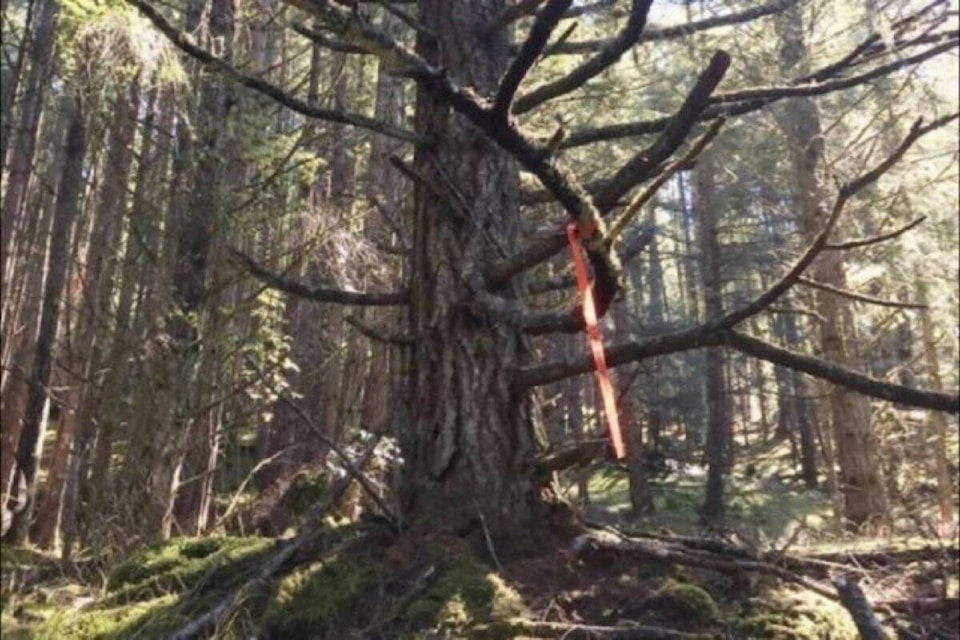The public will be asked to consider four options for the management of North Cowichan’s 5,000-hectare municipal forest reserve starting this fall.
Council recently received a detailed presentation from Dr. Brad Seely and Dr. Peter Arcese from the UBC Partnership Group on the four draft forest management scenarios, which were developed with input received last year in round one of the public engagement process to help determine the future management of the forest reserve, as part of the ongoing review of the MFR.
The options range from continuing harvesting the MFR as in the past to permanently stopping all logging, other than dealing with blow-downs and for safety reasons.
RELATED STORY: “DEEP AND BROAD” PUBLIC ENGAGEMENT WANTED ON MUNICIPAL FORESTS
In 2019, council endorsed just the completion of existing 2018 forestry contracts and harvesting of blow downs in the forest reserve that year until experts were tapped for their input and the public had been thoroughly consulted on what people want for the future of the public properties.
No commercial harvesting in the MFR has taken place since then.
The first scenario presented by the partnership group, called status quo, calls for the historical harvesting practices within the MFR to continue as they were before harvesting stopped three years ago.
The average annual harvest volumes in this scenario would be approximately 17,500 cubic-metres per year, based on past harvesting records, and no carbon credits would result.
Harvesting would be reduced in visually sensitive areas with levels of tree retention intended to mitigate visual impacts, while allowing annual harvest targets to be met.
The second scenario, called reduced harvesting, would see logging cut back by up to 50 per cent of the historical harvesting rate in the forest reserve, and allow for the generation of some carbon credits.
The selection of tree stands and methods of harvesting would be designed to provide a balance between income and employment opportunities associated with logging in the MFR, while minimizing the impact of harvesting on visual aesthetics, recreation opportunities, and biodiversity.
RELATED STORY: PUBLIC CONSULTATION ON NORTH COWICHAN MUNICIPAL FOREST RESERVE BEGIN THIS SUMMER
The third option, called active conservation, would focus on targeted logging with the goal of restoring and enhancing ecosystem conditions that promote biodiversity, while providing some income from harvesting and generating progressively more carbon credits than the first two scenarios.
The principal objective of the fourth option, called passive conservation, is to let the forests within the MFR develop with minimal human intervention.
This scenario would be expected to enhance the development of wilderness recreation opportunities by reducing the footprint of human activities.
The option would likely generate maximum carbon credits as compared to any other scenario, according to the UBC report.
“Similar to how the draft scenarios were developed, the feedback gathered from Round 2 of the public engagement process will inform the UBC group as they finalize the potential forest-management scenarios for council’s review and consideration for adopting a forest management plan,” said North Cowichan’s municipal forester Shaun Mason.
After council gave the green light to beginning Round 2 of the public consultation process working with the four scenarios, North Cowichan’s communication’s director Barb Floden said that process would likely begin sometime in November.
“We first have to get our working group to review all the material,” she said.
“This a complex bunch of information that we have to distill down and present in a meaningful way for the public to understand. That’s going to take some work and then we have to schedule the meetings, advertise them and get people involved.”
Round 2 of public engagement will include workshops, a survey, in-person activities and a statistically valid phone survey of North Cowichan residents.
The final forest management scenario options are expected to be presented to council by the spring of 2023.
robert.barron@cowichanvalleycitizen.com
Like us on Facebook and follow us on Twitter
